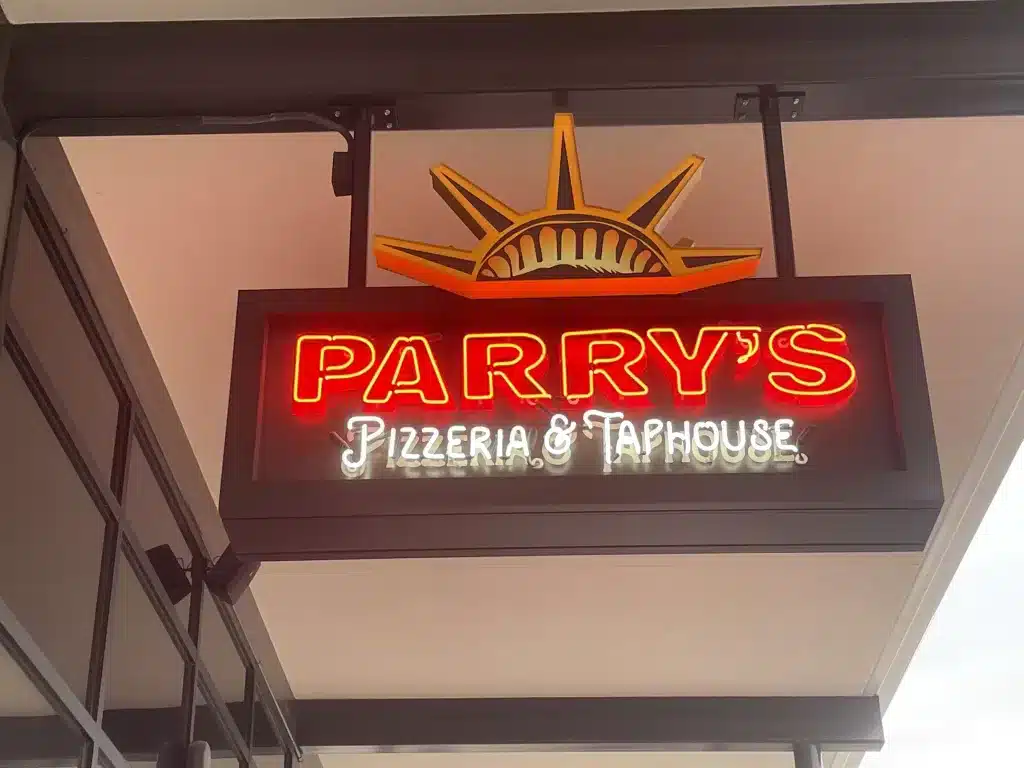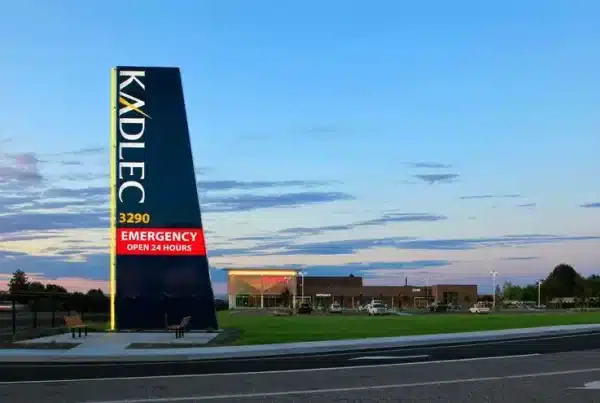Neon lights have long been synonymous with vibrant cityscapes, artistic expression, and bold advertising. Their unmistakable glow once dominated the mid-20th century, turning bustling streets into dazzling displays of light and color. While technology has evolved, the craft of neon signage remains an art form cherished by designers, businesses, and collectors alike.

Neon’s Golden Era: A Revolution in Light
The mid-1900s marked the peak of neon’s popularity, with glowing signs transforming urban landscapes across the world. From the bustling streets of Times Square to the neon-drenched boulevards of Las Vegas, these luminous displays became an essential part of modern culture.
What made neon so revolutionary was its flexibility—unlike traditional incandescent lighting, neon tubes could be bent and shaped into virtually any design. This versatility made it the perfect medium for businesses looking to create eye-catching advertisements, from towering marquees to whimsical logos. Restaurants, theaters, and motels all embraced neon as a way to stand out in an increasingly competitive commercial world.
Beyond advertising, neon became an artistic statement, embodying the optimism and energy of the era. Its vibrant hues and endless design possibilities made it a favorite among architects and designers, shaping the aesthetics of the 20th century.
The Art and Craft of Neon Signage
Despite its widespread use, neon signage is far from mass-produced. Each sign is a handcrafted masterpiece that requires a blend of artistic vision and technical expertise.
The Neon-Making Process
Crafting a neon sign is a meticulous process that begins with heating and bending glass tubes into precise shapes. Skilled artisans, often referred to as “tube benders,” carefully manipulate the glass over an open flame, ensuring it forms the desired curves and angles.
Once shaped, the tubes are filled with noble gases like neon or argon, which determine the sign’s final color. When high-voltage electricity is applied, these gases emit a glowing light, creating the signature neon effect. Additional elements, such as colored coatings or phosphor powders, can be used to achieve even more vibrant hues.
This process requires years of training and practice, with many artisans learning through apprenticeships. Despite advances in LED technology, traditional neon crafting remains a respected and sought-after skill, with artists continually pushing creative boundaries.
Neon’s Enduring Legacy and Revival
While neon signs declined in mainstream advertising with the rise of LEDs and digital displays, they have never truly disappeared. In fact, neon is experiencing a resurgence, particularly in the worlds of art, interior design, and boutique branding.
Contemporary artists are using neon as a medium for thought-provoking installations, blending its nostalgic charm with modern storytelling. High-end businesses and trendy restaurants are incorporating custom neon signs into their branding, embracing the warmth and authenticity that only neon can provide.
Neon’s appeal lies not just in its glow, but in its handcrafted nature—each sign carries a sense of craftsmanship and individuality that mass-produced LED displays cannot replicate.
Neon in Popular Culture
Neon signs have transcended their commercial origins to become cultural icons. They’ve been immortalized in films like Blade Runner, where the neon-lit dystopian cityscape set a new standard for cinematic visuals. Musicians and artists have also embraced neon aesthetics, using the medium to convey modernity, nostalgia, and urban grit.
Preservation Efforts
As technology advances and cities modernize, many traditional neon signs have been replaced by LED displays. However, preservationists and enthusiasts recognize the cultural and historical value of these luminous artifacts. Museums and restoration projects continue to curate and restore classic signs, offering insights into their significance.
The Future of Neon: Why This Iconic Glow Is Here to Stay
Neon lights have long been a symbol of urban landscapes, artistic expression, and vintage charm. While LED technology offers energy efficiency and versatility, neon signs continue to captivate with their warm glow and nostalgic appeal. Today, artists, designers, and businesses are embracing neon in new and innovative ways, ensuring that this luminous craft remains a vital part of our visual culture.
The Timeless Appeal of Neon
Unlike LEDs, which produce a sharp and uniform light, neon creates a soft, mesmerizing glow that feels organic and inviting. This distinctive aesthetic has made neon a staple in signage, art, and interior design for over a century. From classic diner signs to contemporary art pieces, neon carries an unmistakable charm that modern alternatives struggle to replicate.
Neon’s Revival in Modern Design
In recent years, neon has experienced a resurgence in popularity. While it was once associated primarily with vintage advertisements and retro aesthetics, today’s designers are integrating neon into modern spaces in fresh and exciting ways.
Art Installations and Exhibitions
Contemporary artists are using neon to create bold, thought-provoking installations that blend traditional craftsmanship with modern themes. Neon art has become a popular medium for conveying messages, emotions, and abstract concepts, making it a fixture in galleries and museums worldwide.
Boutique Signage and Branding
Many businesses, especially high-end boutiques, cafes, and creative spaces, are turning to neon for customized signage that exudes personality and style. Unlike generic LED displays, neon signs offer a handcrafted, artisanal feel that aligns with the growing demand for unique and memorable brand aesthetics.
Architectural and Interior Design
Neon is no longer confined to exterior signage. Interior designers are incorporating neon elements into home decor, office spaces, and hospitality settings to add a vibrant, artistic touch. Whether it’s a neon quote on a bedroom wall or a glowing installation in a trendy hotel lobby, this medium has found new life in interior design.
The Role of Technology in Neon’s Future
Although traditional neon signs require skilled craftsmanship, advances in technology are making neon more accessible and sustainable. LED neon alternatives, which mimic the look of traditional neon while offering lower energy consumption, have gained popularity. However, purists argue that nothing quite matches the authentic glow of real neon.
Additionally, modern manufacturing techniques are improving the durability and efficiency of neon, ensuring it remains a viable option for both artistic and commercial applications. As eco-friendly materials and energy-efficient gases continue to develop, neon is evolving to meet contemporary environmental standards.
Why Neon Will Always Have a Place in Visual Culture
As trends shift toward handcrafted and nostalgic aesthetics, neon’s enduring appeal is undeniable. Unlike fleeting digital displays, neon carries a sense of permanence and craftsmanship that resonates with audiences.
From classic Hollywood sets to modern Instagram-worthy installations, neon continues to capture attention and evoke emotions. Whether it’s illuminating a city street or adding a creative touch to a personal space, neon’s vibrant glow is far from fading.
Final Thoughts
While LED lighting offers many practical advantages, neon remains irreplaceable in terms of character and artistic impact. As more designers, businesses, and artists embrace this medium, the future of neon looks brighter than ever. Whether through cutting-edge digital collaborations, sustainable innovations, or timeless handcrafted signs, neon is set to shine for generations to come.



